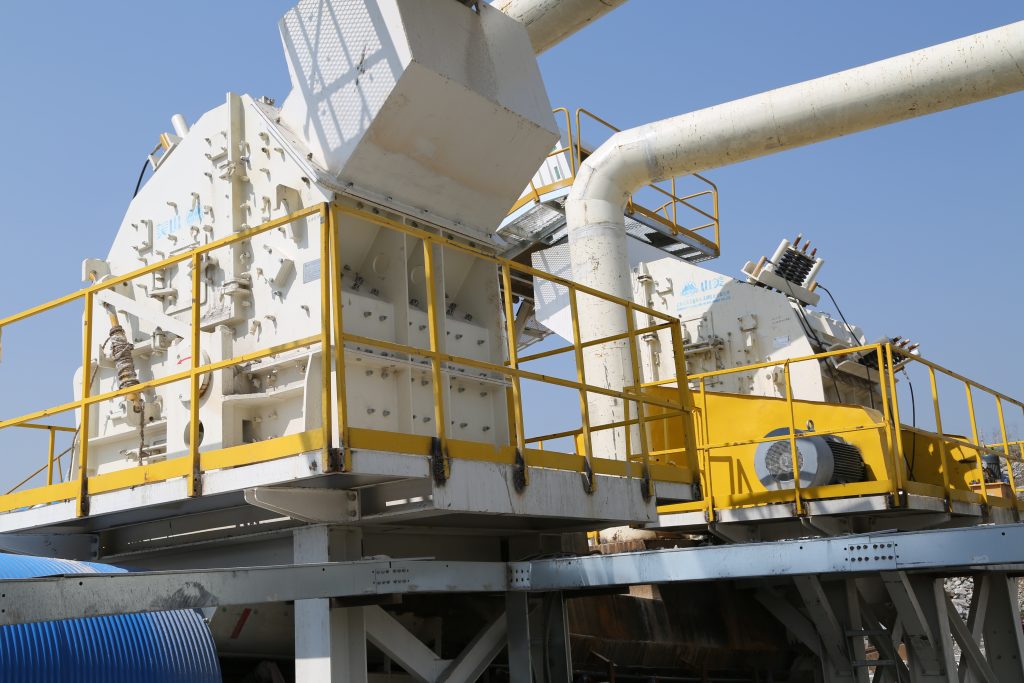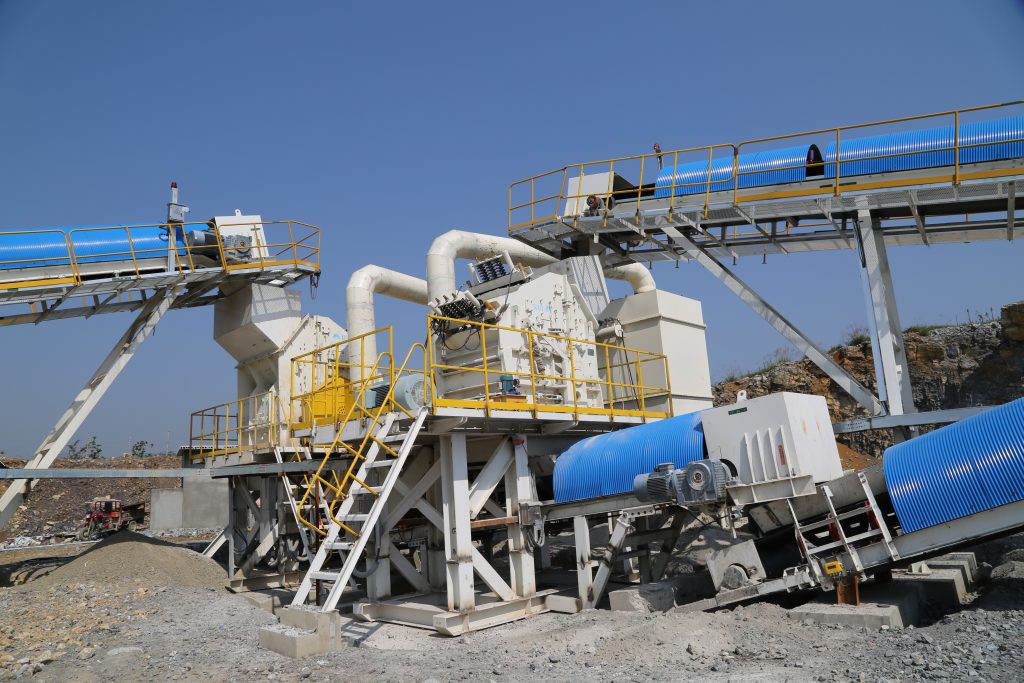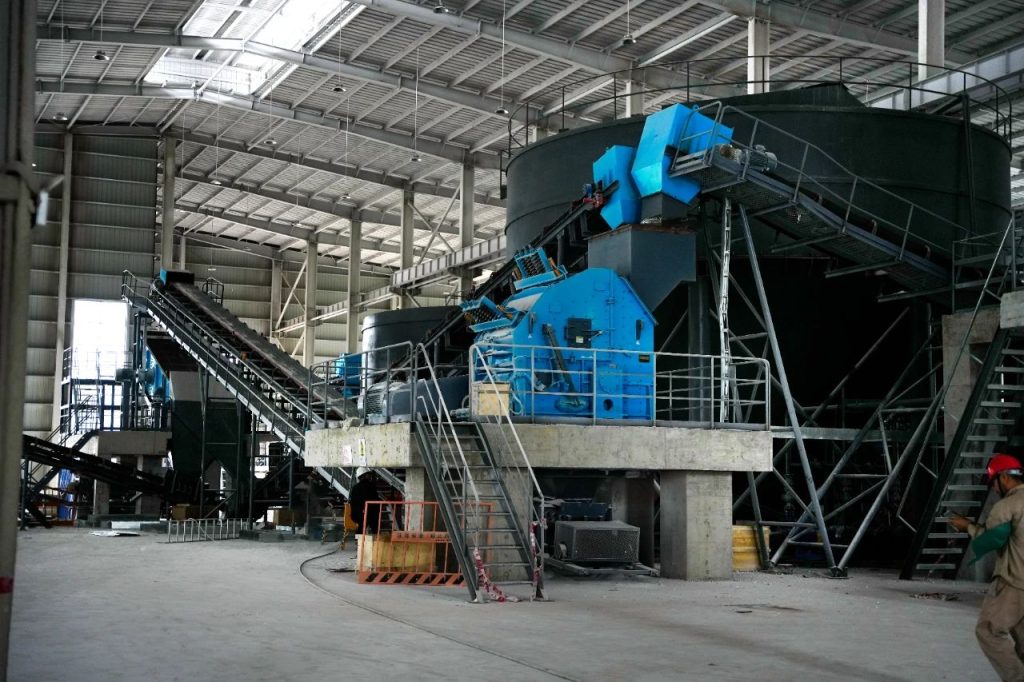
400Kw Metallurgy Feeding 460mm Cone Crusher Machine
2025-10-30
HSI (Horizontal Shaft Impact Crusher) crushers, with their high-efficiency crushing, strong adaptability, and optimized structure, are suitable for various industrial applications. The following is an analysis of their core application areas and specific scenarios:
I. Sand and Gravel Aggregate Processing
Natural Sand and Gravel Mining
Scenario: Processing medium-hard and soft rocks such as limestone, granite, and basalt to produce construction sand and gravel.
Advantages: High crushing ratio (single-pass crushing ratio can reach 1:10 or higher) reduces multi-stage crushing processes, lowering equipment investment and energy consumption. For example, the Shanmei HSI5118 model has a feed particle size ≤1600mm and a production capacity of 50-1400t/h, suitable for large-scale sand and gravel plants.
Case Study: In highway and bridge construction, HSI crushers can quickly crush ore into aggregates of 0-5mm and 5-10mm specifications to meet concrete mix requirements.
Manufactured Sand Production
Scenario: By adjusting the discharge port and rotor speed, manufactured sand with rounded particle shape and reasonable gradation can be produced.
Advantages: Compared to vertical shaft impact crushers (VSI), HSI is more efficient in sand production from soft materials and has lower equipment maintenance costs.

2. Construction Waste Recycling and Resource Utilization
Concrete Block Crushing
Scenario: Processing demolished reinforced concrete structures, separating the reinforcing steel and crushing it into recycled aggregate.
Advantages: The impact force of the HSI crusher effectively crushes the cement matrix in concrete while avoiding reinforcing steel entanglement in the rotor. For example, Puta Environmental’s HSI series reduces the risk of reinforcing steel jamming through optimized rotor design.
Case Study: In urban redevelopment projects, HSI crushers convert construction waste into recycled aggregate for roadbed filling or non-load-bearing structural concrete.
Brick and Tile Waste Processing
Scenario: Crushing clay materials such as bricks and tiles to produce recycled block raw materials.
Advantages: HSI has high crushing efficiency for low-hardness materials, and its overload protection device prevents damage to the equipment from metal mixed in with bricks (such as nails).

3. Mining and Metallurgical Industry
Ore Coarse and Medium Crushing
Scenario: In metal mines such as copper and iron ore, it serves as a secondary crushing device to process materials discharged from jaw crushers.
Advantages: The HSI crusher can control the output particle size by adjusting the rotor speed and impact plate angle to meet the requirements of subsequent grinding or beneficiation. For example, the Elics HSI series is used in copper mines to achieve a high crushing ratio with fewer stages, reducing beneficiation costs.
Case Study: An iron mine used an HSI crusher to replace the traditional cone crusher, reducing the number of crushing stages from three to two, and lowering energy consumption by 15%.
Tailoring Comprehensive Utilization
Scenario: Crushing waste rock in tailings to extract useful minerals or produce construction sand.
Advantages: The flexible discharge port adjustment function of the HSI can adapt to fluctuations in tailings particle size, ensuring stable output.

4. Cement and Chemical Industry
Cement Raw Meal Preparation
Scenario: Crushing raw materials such as limestone and clay to provide uniformly sized raw meal for cement kilns.
Advantages: The impact crushing of HSI crushers reduces over-grinding of raw materials and improves calcination efficiency. For example, the HAZEMAG HSI series, used in cement plants, improves raw material particle size uniformity by 20%.
Case Study: A cement plant replaced its hammer crusher with an HSI crusher, reducing raw material power consumption by 10% and reducing equipment wear.
Chemical Raw Material Crushing
Scenario: Processing chemical raw materials such as coal gangue and gypsum to produce powder or granular products.
Advantages: The sealed design of HSI crushers prevents dust leakage, meeting the environmental protection requirements of the chemical industry.

5. Special Application Scenarios
Asphalt Mixture Recycling
Scenario: Crushing recycled asphalt pavement material (RAP) to produce recycled asphalt mixtures.
Advantages: The gentle crushing method of HSI crushers avoids excessive aging of asphalt, preserving the adhesion between aggregate and asphalt.
Glass Recycling
Scenario: Crushing waste glass into fine sand for use as raw materials for glass products or road reflective materials.
Advantages: HSI’s hammer and impact plate materials can withstand the hard impact of glass, and the output particle size is controllable.
6. Selection Recommendations
Material Hardness:
Soft materials (e.g., limestone, coal gangue): HSI crushers are preferred due to their high efficiency and low maintenance costs.
Medium-hard materials (e.g., iron ore): Heavy-duty rotors and high-wear-resistant hammers are required, such as the Elisco HSI series.
Hard materials (e.g., granite): Pre-crushing with a jaw crusher is recommended, or a cone crusher can be selected.
Output Requirements:
Small projects (<100t/h): Compact equipment such as the HAZEMAG HSI 1007 is recommended.
Large production lines (>500t/h): High-capacity models such as the Shanmei HSI5118 or HAZEMAG HSI 1630 are recommended.
Environmental Requirements:
Enclosed crushing workshops: HSI crushers with dust removal devices are recommended, such as the Puta Environmental series.
Open-air operations: A sprinkler system is recommended to reduce dust.